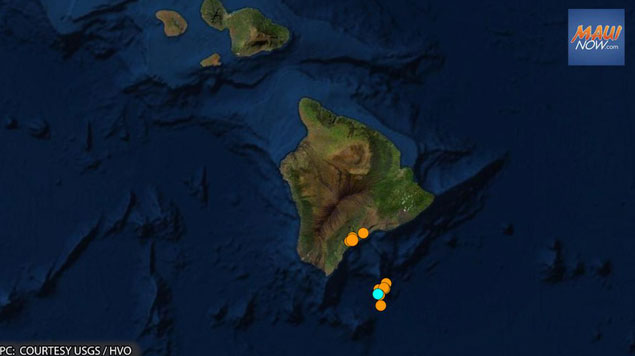The Hawaii Volcano Observatory has reported an increase in seismic activity from Kamaʻehuakanaloa Volcano at 2 AM on July 16 (local time). Within just 24 hours, the volcano triggered 20 earthquakes with magnitudes ranging from 1.8 to 3.0 on the Richter scale.

Seismic activity at Kamaʻehuakanaloa Volcano – (Photo: USGS)
The seismic tremors are measured by energy pulses every 15 to 20 seconds. This activity is ongoing, and so far, a total of 24 earthquakes have been recorded. Fortunately, there have been no reported damages to nearby buildings, nor has there been any sensation of “shaking” during these tremors.
Kamaʻehuakanaloa is an underwater volcano, located 35 kilometers off the southeastern coast of the Hawaiian Islands (USA). Its summit is approximately 975 meters below sea level, according to Newsweek.
Seismic activity from Kamaʻehuakanaloa has been recorded since the early 1950s. The largest earthquake swarm occurred from July to August 1996, during which over 4,000 earthquakes were documented, with around 95 of them reaching magnitudes of 4.0 to 4.9 on the Richter scale.
In 2020, 100 earthquakes were recorded at Kamaʻehuakanaloa, including nearly 20 earthquakes with magnitudes between 3.0 and 3.9 on the Richter scale.
Due to the volcano’s summit being deep underwater, there are no monitoring devices inside it. However, scientists can track its activity using seismometers on land.
Dr. Ken Hon, the scientist in charge of the Hawaii Volcano Observatory, stated that the underwater volcano does not pose a threat to the Hawaiian Islands. He also noted that despite Kamaʻehuakanaloa’s “noisy” activity, both Mauna Loa and Kīlauea volcanoes nearby have shown no changes in activity.


















































